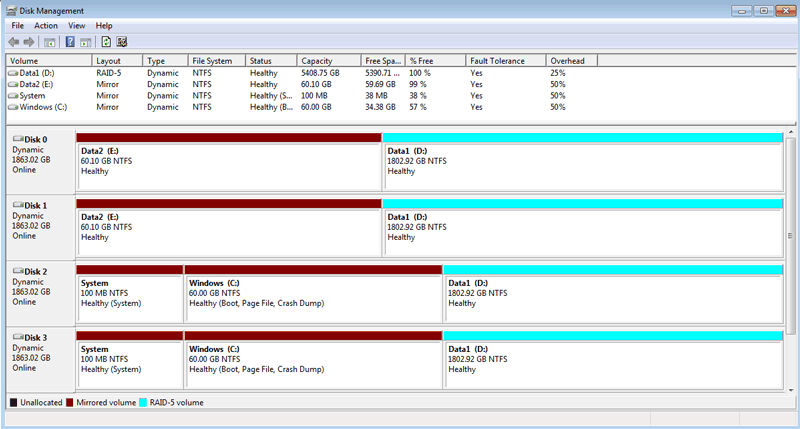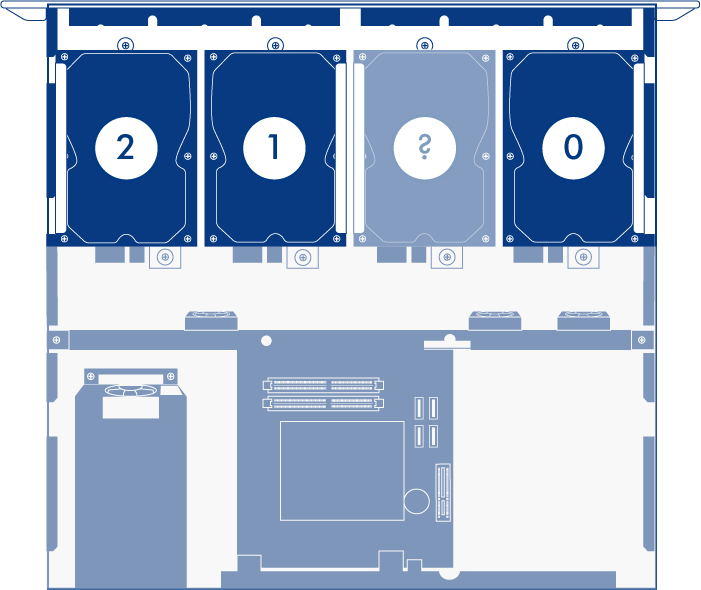User Tools
Site Tools
Table of Contents
Windows Disk Numbering
The 4big Rack Office uses Windows Disk Management to configure RAID for its four disks. To properly manage the disks, Windows must assign numbers to the physical disks.
Disk Numbering: Windows Disk Management
The screenshot below of Windows Disk Management shows a standard RAID configuration with four disks.

The illustration below shows how Windows Disk Management numbers correlate with the physical placement of the disks in the 4big Rack Office enclosure.

Please note that each disk takes part in two RAID configurations. For example, approximately 60GB of Disk 2 is part of a mirror that runs the Windows operating system. The remainder of Disk 2 is also one of four drives that make up the Data1 volume, a RAID 5 array.
Disk Numbering and a Missing Disk
During standard operation, the numbering will not change. However, if a disk should fail, the default disk numbering could become confused, especially if the 4big Rack Office is restarted while a disk is marked as Missing. A missing disk could indicate:
- A disk physically removed from its slot
- Disk failure
For example, if Disk 1 has been physically removed from its slot or it is no longer recognized, Disk Management will remove it from the list. Disk Management will note that the hard drive is Missing. The other three disks will maintain their default number assignments since the 4big Rack Office has not been restarted. If the system restarts before the Missing disk has been repaired, Windows will reassign numbers to the remaining disks based upon their physical order.
In our example, Disk 1 was removed from its slot, becoming the Missing disk in Windows Disk Management. If the 4big Rack Office is restarted with an empty slot or the disk is not recognized, Windows will assign new numbers to certain drives:
- Disk 0 remains Disk 0
- Disk 2 becomes Disk 1
- Disk 3 becomes Disk 2
The Missing disk will remain on the list until it is manually removed from Windows Disk Management.

 Print page
Print page Save page as PDF
Save page as PDF


